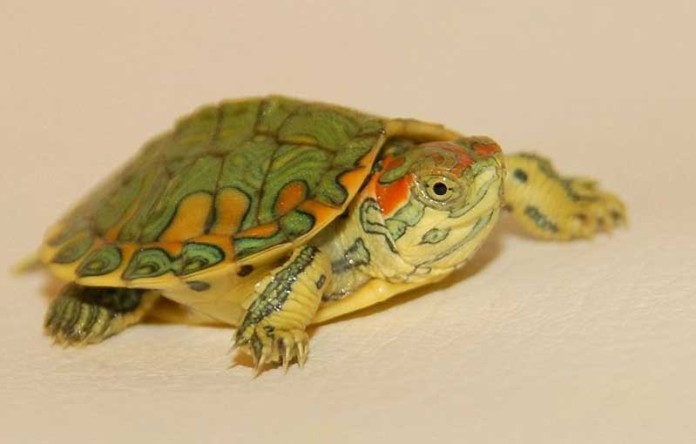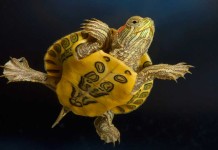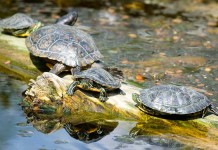Red eared slider baby needs a diet that is a bit different than an adult slider. Don’t simply look at a care sheet and start feeding the little guy whatever it says. Baby sliders eat a mostly carnivorous diet for the first few months of their life, so if you want your turtle to grow up healthy and happy you need to emulate this as much as possible.
The first thing you need to know is that pellets should only make up about 5% of your red eared slider baby’s diet, if that. Hatchling pellets, and turtle pellets in general, contain a lot of protein, which could lead to an overweight and therefore unhealthy turtle if fed excessively. In reality, you can easily cut pellets out of a baby slider’s diet entirely. Regardless, only feed your baby a miniscule amount of pellets.
You may be tempted to load your baby slider up on veggies as well, but this will only lead to dirty water as your baby ignores the vegetable matter for meat. In general, vegetables should only comprise about 25-30% of your baby’s diet. When you do give him small amounts of dark, leafy greens, carrots, or squash, make sure you chop it very finely or shred it. Make sure you collect what he doesn’t eat so it doesn’t soil the water or clog the filter.
As you’ve probably figured out, meat will form the majority of your red eared slider baby’s diet—75% of it in fact. In the wild, baby sliders eat insects, worms, snails, small tadpoles and small fish—basically whatever they can catch! In captivity, try to simulate this as much as possible with appropriately-sized mealworms, wax worms, minnows, crickets and earthworms. Make sure you only use commercially-bred live food, as worms and insects from your backyard could be full of parasites that could harm your slider. The majority of your baby’s diet should be earthworms and gut-loaded crickets. Gut-loading means feeding the crickets some carrots or sweet potato before feeding the crickets to your turtle. This way you can ensure that the crickets are full of nutrients. Only feed the other stuff sparingly, as it tends to be high in fat. You also want to vary the diet so the baby doesn’t fixate on its favorite food and eschew the other food.
If your red eared slider baby refuses to eat, try giving him some cooked, shredded chicken, beef or beef heart. If that doesn’t work, try force feeding him with an eye dropper. Whatever you do, always switch around the food offered so he gets used to having a varied diet. If you’re lazy to prepare the food, try to provide the baby red eared slider with hatchling formulated dry micro pellet which contains high protein.











